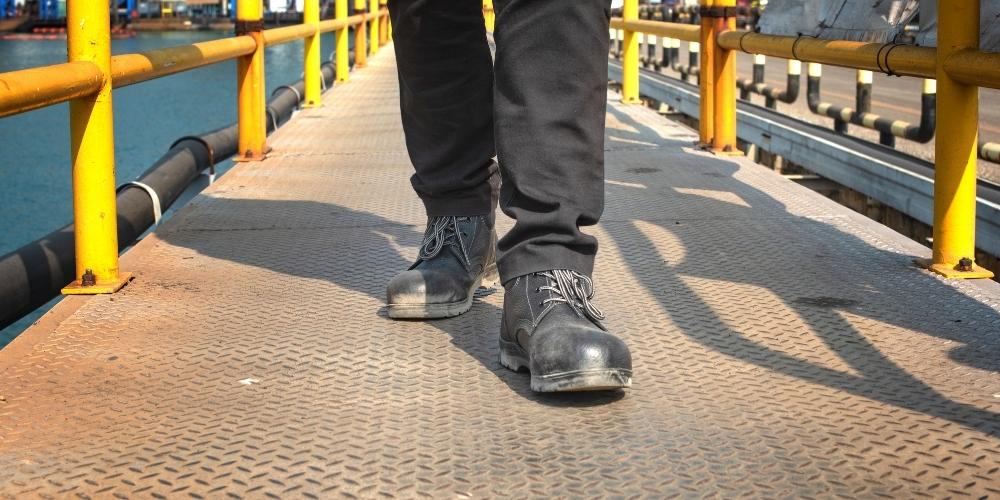
How to Choose the Best Safety Shoes: A Complete Guide
Nov 16 , 2021
Tags - How to Choose the Best Safety Shoes
In many job roles, keeping your feet safe and protected is essential, which is why it’s so important to wear the correct footwear to work.
As the name suggests, safety shoes are designed to keep your feet safe and reduce the likelihood of an injury.
To put it simply, this type of footwear protects your whole foot, including your soles, toes and ankle, and it can protect you from:
- Extreme temperatures
- Water, oil or other liquid spillages
- Sharp objects you may step on
- Impact from heavy objects falling to the ground
- A build of static electricity
But, with so many different types of safety shoes available, it can often become confusing when choosing the best pair for you.
In this guide, we discuss the main types of safety shoes out there, including what they’re best for and its benefits to help you select the right ones.
Types of Safety Footwear
Generally speaking, safety footwear is split into 3 main types: boots, trainers and shoes.
And, each of these offer a different level of protection that can be used in various environments and workplaces.
Safety Boots
In all industries, safety boots will be ideal and will ensure your safety and wellbeing.
Safety boots are the most common type and their features include:
- Protective steel toe caps: that should protect your feet from heavy objects and withstand a 20kg impact
- Slip resistant soles: to prevent falls on slippery surfaces; the soles are made from rubber that doesn’t crack and provides cushioning
- Penetration resistant midsoles: to stop sharp objects from hitting your foot
- Compression protection: to protect your feet from impact and withstand up to 1.5 tonnes resting on the toe area
- Padded collar: to provide ankle support
- Heat resistance: this can vary, but some boots can resist temperatures up to 300℃.
- Chemical resistance: soles are resistant to acids, alkalis and chemicals
- Insulation: to protect against extreme temperatures.
Plus, they usually include protective reinforcement at the front which makes them more durable.
Safety Shoes
Like safety boots, safety shoes also have protective steel toe caps; but they are available in “metal free”, making them lighter.
In terms of work, safety shoes are perfect for those working in shops, warehouses, healthcare and office workers who may need to go into high-risk areas.
Regarding protection, safety shoes will protect you against heat, chemicals and electrical shocks.
In addition, the soles in these shoes have adequate padding and provide comfort whilst decreasing fatigue.
Lastly, safety shoes are usually lined with moisture wicking materials to keep feet warm and dry.
Safety Trainers
Safety trainers are very similar to safety shoes except they’re a more casual style, making them perfect for those who do not want to wear traditional safety shoes.
And so, their relaxed and comfortable style makes them ideal for tradesmen and delivery drivers.
Like the other two types mentioned above, safety trainers will have toe caps, either steel or plastic, known as composite toe caps to protect the feet.
As safety shoes and trainers are very similar, their features are the same too:
- Toe cap: either made from steel or composite and designed to withstand a 200-joule impact
- Penetration-resistant midsole: usually on trainers, but protects sharp objects from going through the shoe
- Penetration-resistant outsole: like the midsole, but on the outsole.
- Slip-resistant soles: prevents injuries from slippery surfaces as well as being resistant to chemicals
- Padded collar: for ankle support and comfort
- Cushioned heel: provides comfort when walking
- Compression protection: protects against impacts
Considerations
Now that we’ve run through the features of the three main types of safety footwear, here are some final considerations to keep in mind when buying.
When shopping, you may have noticed some abbreviations that you haven’t seen before:
- P: Penetration-resistant
- C: Conductive
- A: Antistatic
- I: Electricity insulating footwear
- E: Energy absorption
- HI: Heat insulation of sole
- CI: Cold insulation
- WR: Water-resistant
- M: Metatarsal protection
- AN: Ankle protection
- CR: Cut-resistant upper
- WRU: Water penetration and water absorption upper
- HRO: Heat resistant outsole
- FO: Resistance to fuel oil
So, when you buy, ensure your footwear meets the regulations for the specific job you’ll be carrying out.
In terms of fit, when wearing safety shoes there should be an inch of space in the front of your shoes and your heel firmly in place; they shouldn’t rub against the back of the shoe or this could result in blisters.
Please get in touch to find out more.
Check our range of safety shoes here in the meantime.
You may also like:
